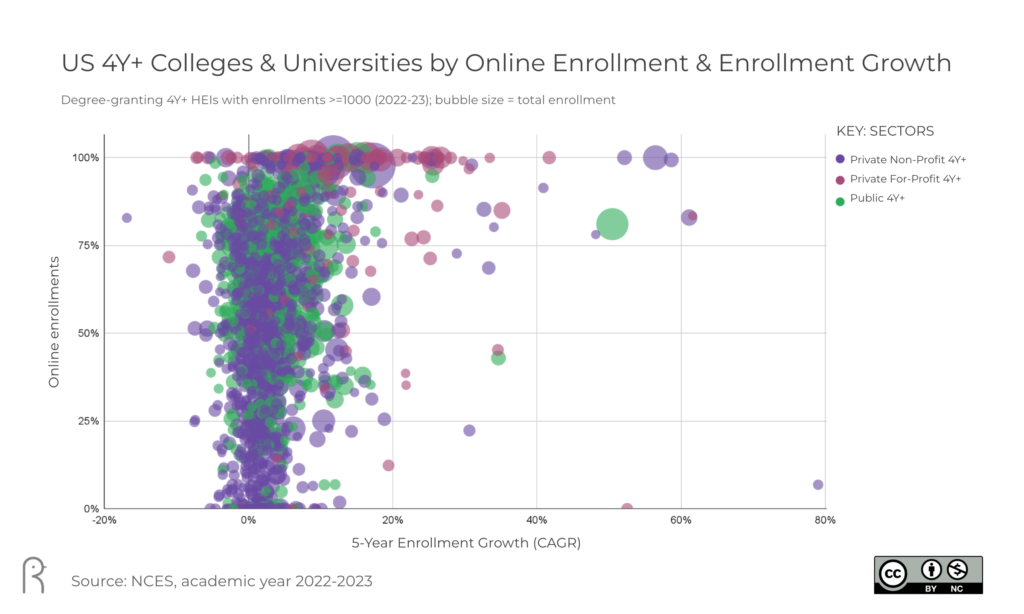TL;DR: Yes, as the proportion of HE students taking online courses has grown, so has overall enrollment.
In theory, marketing online courses and programs offers enrollment growth opportunities to higher education institutions (HEIs). For instance, it’s obvious that the largest US HEIs are also those with massive online programs, and the draw of many academic programs to develop and launch new online courses (especially through OPMs) is enrollment growth.
We also know that, for many institutions, students enrolling in online courses are often on-campus students who are leveraging online offerings to avoid course bottlenecks, accelerate time to completion, or just provide flexibility in their schedules.
NCES data doesn’t provide us with the exact details we’d want to investigate whether investing in online (aka distance) education results in consistent enrollment growth across HEI sectors, however we have enough data to do some basic probing:
For all degree-granting HEIs with 1000 or more students, I used the last five years of each institution’s total student enrollments to derive their compounded annual growth rate (CAGR). After tossing outliers, I correlated this with a several NCES indicators that suggest their investment in online education:
- Students enrolled in one or more online courses (latest year)
- Students enrolled in all online courses (latest year)
- CAGR of students enrolled in one or more online courses (last five years)
Across all sectors, the strongest correlation was between 5-year enrollment growth and the 5-year growth of online as a proportion of enrollments: 0.61 for 4Y+s and 0.70 for 2Ys.
I.e. as the proportion of students taking online courses has grown across HEIs, so has overall enrollment.
There are also some notable correlations for some sectors between…
- Enrollment growth and total enrollment (large institutions tend to have grown faster)
- Enrollment growth and fully online enrollments, both as a count and a % (HEIs with large fully online populations tend to have grown faster).
Correlations suggest relationships between variables for a population, but they don’t tells us much about individual institutions. So here are a couple visualizations of US HEIs that do a better job of illustrating how different institutions map to % of online enrollments and enrollment growth:


And finally, here’s a table of correlations for each sector:


